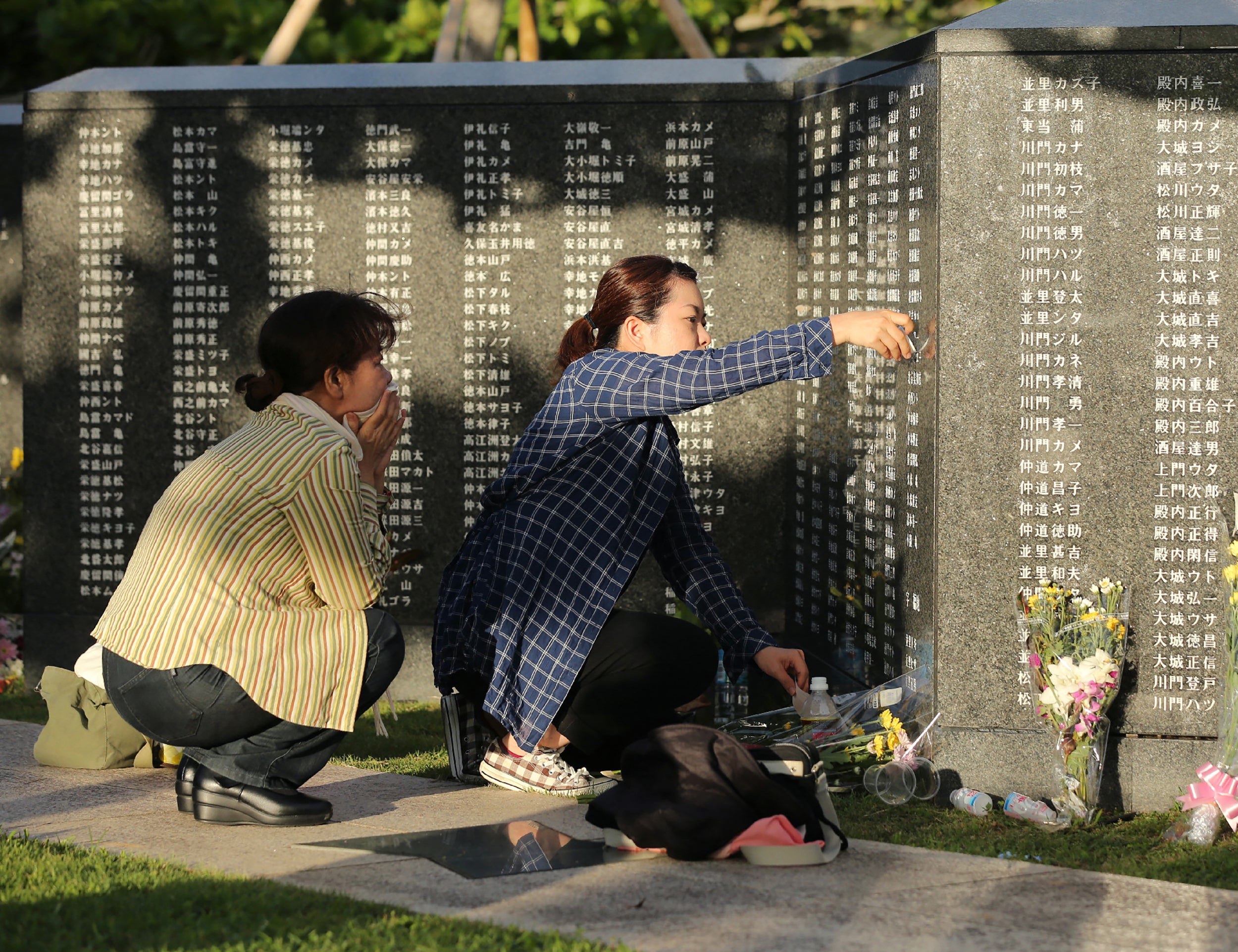New US airbase at Okinawa being built ‘with remains of war dead’, claim volunteers
Volunteers searching for the remains of those who died during the Battle of Okinawa have called on the government to stop new construction

Your support helps us to tell the story
From reproductive rights to climate change to Big Tech, The Independent is on the ground when the story is developing. Whether it's investigating the financials of Elon Musk's pro-Trump PAC or producing our latest documentary, 'The A Word', which shines a light on the American women fighting for reproductive rights, we know how important it is to parse out the facts from the messaging.
At such a critical moment in US history, we need reporters on the ground. Your donation allows us to keep sending journalists to speak to both sides of the story.
The Independent is trusted by Americans across the entire political spectrum. And unlike many other quality news outlets, we choose not to lock Americans out of our reporting and analysis with paywalls. We believe quality journalism should be available to everyone, paid for by those who can afford it.
Your support makes all the difference.The Japanese government is under fire for its plan to procure thousands of tonnes of soil from 1945 battlefields to build a new US airbase in southern Japan.
The reclamation work as part of the relocation of the US Futenma Air Station in Henoko has drawn criticism, as soil which had been set aside for the project on Okinawa island is said to contain the remains of both Japanese and American soldiers who died during the battle there.
The Battle of Okinawa began almost 76 years ago and claimed 200,000 lives. The last major battle of the Second World War, it has been described as “the bloodiest of the Pacific campaign”.
Now volunteers excavating the remains of those killed in 1945 on Okinawa have called on Japan’s defence ministry to end the construction work, saying that repurposing the soil would be an insult to the war dead. About 100,000 Japanese soldiers died at Okinawa, along with 12,000 US soldiers, sailors and marines.
According to the US Department of Defense, the battle also claimed the lives of nearly 100,000 civilians. It ended about six weeks before the US dropped the atomic bombs on Hiroshima and Nagasaki. Okinawa, located 1,000 miles south of Tokyo, now hosts almost two-third of the US military bases in Japan, reported the Japan Times.
Read more:
In April 2020, the Japanese defence ministry applied to the Okinawa Prefectural Government to procure soil for the new base after evidence suggested that the seabed for the new base was softer than presumed.
According to local media reports, though the prefectural government is still reviewing the application some of the candidate sites for collecting soil have been changed from the original plan, and now include Itoman and Yaese in the southern part of the main island of Okinawa.
Takamatsu Gushiken, the head of the Gamafuya (cave diggers) organisation, told the Guardian that the soil material from these sites is likely to contain the remains of the civilians, Japanese and American soldiers who died during the war.
“The Japanese government’s plans will destroy the dignity of war victims… I can barely believe it,” Mr Gushiken, 67, told the paper. “It doesn’t matter if you are for or against the Henoko base – this is a humanitarian issue.
“Soil from the scene of a bloody battle is going to be dumped in a beautiful bay, and it needs to stop.”
The Okinawan government has estimated that the remains of 2,800 victims of the battle are still buried in the land, reported the Guardian.
Japan’s defence minister Nobuo Kishi however said that the firms involved in the reclamation project would conduct visual checks of the soil before removing it.
Join our commenting forum
Join thought-provoking conversations, follow other Independent readers and see their replies
Comments